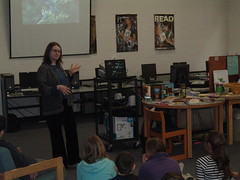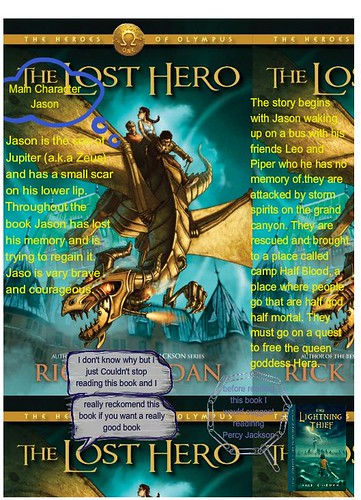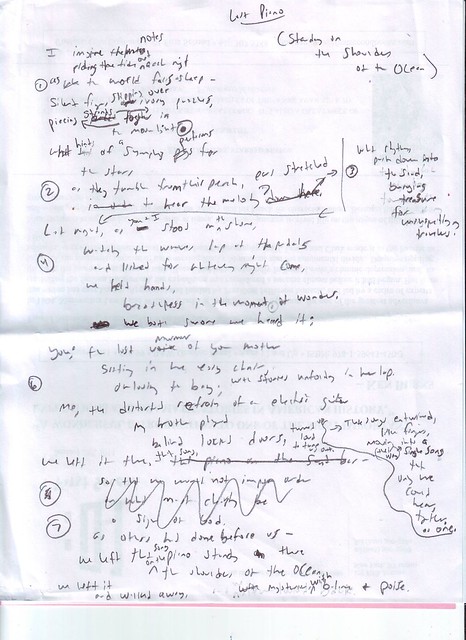
Yesterday, we had the pleasure of having one of the team of novelists from The Warriors book series in our school to talk with students about her work as a writer and a book editor. Tui Sutherland was kind, and gracious, and opened the floor up to a lot of questions from students about where she gets her inspiration, how she works with other writers under a common pen name, and her career arc from editing into novelist.
Sutherland was brought to the school because fifth grade students decided they wanted her, and they sponsored a series of cat-related events in our school to raise money to pay for her visit. There are some die-hard Warrior fans, I guess. To be honest, I have not read any of the books in the series, nor her newest series — The Seekers — but I do see plenty of kids walking around with them under their arms. I suspect I will now see even more.

She repeatedly encouraged kids to write, and explained that when she was their age, she wrote and wrote and wrote. She also noted, however, that she rarely finished as story. “I love beginnings. It wasn’t until college that I really began to finish the stories I started. The more you write, the better you get about getting to an end,” she said, and I’ll bet that rang true with a lot of my young story writers, who often lose steam midway through stories.
As Sutherland spoke with sixth graders, I jotted down some notes about her as a writer.
First of all, she’s a night owl, and has a dog not a cat (which drew laughter from the students). After midnight “is my secret writing hour,” she explained. “That works for me.”
She became a novelist because she was in the right place at the right time. As an editor in a publishing company, she got her start as a writer by writing the text for sticker books, which led to writing early reader books, which led to a biography of Harry Houdini, which led to larger projects. Her connection to The Warriors series was first as an editor, and then when she left publishing to become a writer, the head author of The Warriors asked Tui to join their team.
She talked a bit about why writers sometimes use pseudonyms. In the case of her work in updating some Little House on the Prairie books, the name she chose for her work started with the same last letter of Laura Ingalls Wilder so that her Little House books would be located in the stacks near the original. In the case of The Warriors, the use of a single name for four writers allows each to contribute under a single name. But, Tui admitted: “I would love to have my name on all of my books, even though there are logical reasons” for pseudonyms.
She has written a few Disney novelizations of movies, including the last Pirates of the Caribbean movie. Disney forced her to sign all sorts of non-disclosure agreements and made her do all the writing on a Disney computer in a Disney office, and she could not bring any papers home with her. She also did a novelization of the updated Christmas Carol, which struck even her as odd, given that the movie is adapted from the Dickens’ novel.
And she urged students to write and aspire to become writers. She pointed out that televisi0n, movies and video games all have stories and characters at the heart of their work, and writers are behind them all. “There are all sorts of ways to be writers these days,” she encouraged them.
I see those writers just about every day in my class, but I was glad that Tui came and shared her story with us.
Peace (in the writing),
Kevin




